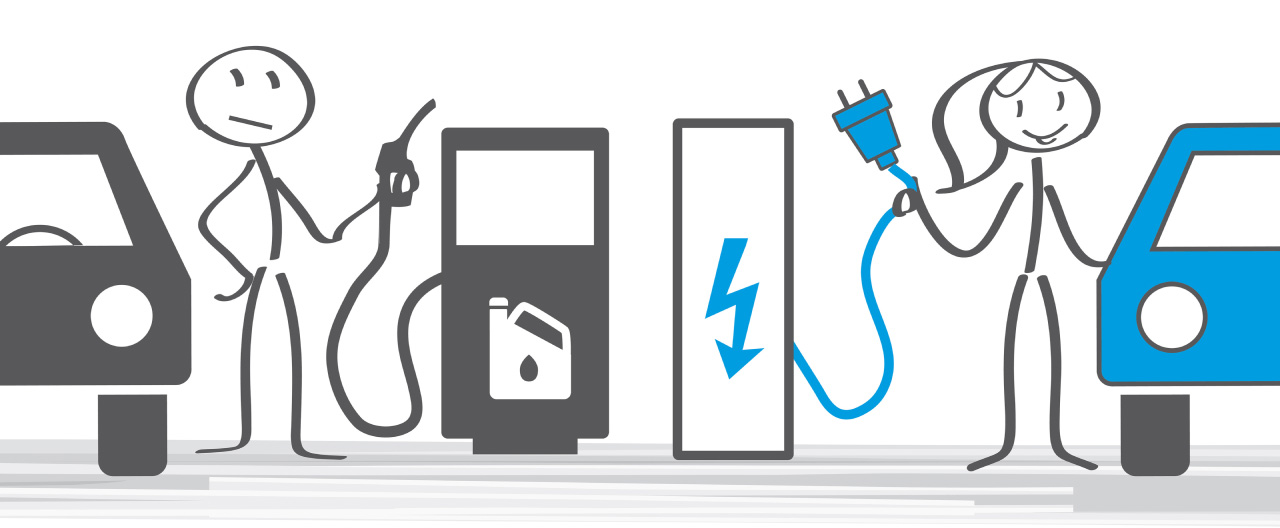With the overwhelming majority of cars and trucks in the United States powered by gas and diesel, can gas-powered cars be entirely phased out of the market? The idea is not as alien as it once was. It is noteworthy to consider why these ideas are becoming a reality and when these changes could occur.
By 2035, at least seven states aim to ban the sale of new gas-powered automobiles. Then, only zero-emissions cars will be available for purchase, including electric vehicles and some hybrids.
The Push to End Gas-Powered Cars
Fossil fuels are among the cheapest forms of energy production. And with the demand for energy growing, it is increasingly difficult to give up this reliable energy source. But it cannot be overlooked that each year nearly seven million deaths worldwide are caused by diseases triggered by air pollution.
Some feel that moving away from fossil fuels will benefit other areas of our life, including fewer sick days, healthier waterways and air, and the ability to direct government funds to other agencies and needs such as education and crumbling infrastructures.
A Rise in Electric Car Sales
Within two years, global electric car sales went from accounting for 4% of market sales to 14%. Those numbers are projected to increase an additional 4% within a year. China, Europe, and the United States are the driving markets for these sales.
Even in smaller regions like India and Indonesia, electric car sales have tripled. Additionally, these regions are taking advantage of two- and three-wheeled electric vehicles offering more economical transportation.
The Challenges of Change
There are considerable challenges to bringing this idea to fruition. It only takes a recent history review – with a recollection of the winter storm that shut Texas’ power grid down for days – to realize that change has to occur.
The vast distances in rural areas where fuel options are currently not available pose challenges. Some roads in the United States stretch over 240 miles without fueling options. What issues need addressing before the end of the gas-powered car comes to fruition?
Charging Infrastructure
The unavailability of charging infrastructure in the United States, much less globally, does not currently support ending the production of gas-powered cars. As more people adopt this major change in the transportation industry, the demand for charging stations will rise, increasing the incentive to produce more stations.
The furthest distance traveled on a single charge was recorded at over 500 miles, but the average is between 200-300 miles. Further driving distances between charges or more charging stations must first be achieved.
Production Cost
The price of an electric vehicle is still unaffordable for many people. The hope is that, like infrastructure demands, a rise in electric vehicle demands will drive the price of these automobiles down.
The United States government currently offers a tax credit of up to $7500 when you buy a qualified EV (electric vehicle) between 2023 and 2032. There are additional restrictions that apply. These incentives are tools used to usher out the era of gas-powered cars.
Is the End Near?
For people living in urban cities and coastal states, the end of gas-powered cars is closer than it was. Coastal states have adopted the idea of zero-emissions automobiles much quicker than interior states. This lack of acceptance may reflect the inequities in infrastructure in some interior states, as previously mentioned.
But it appears this global movement of new car sales consisting only of electric vehicles will be taking place in most countries by 2050. The change in new sales of electric cars reflects only with passenger vehicles. The transition of medium and heavy-duty vehicle sales to zero-emissions vehicles will see a further reaching timeline.
The Effects on Mass Transit
How soon EVs will become more affordable is not known. Because of this, mass transit may experience a boost in use by drivers unable to afford the purchase of an electric car, further stimulating the need for mass transit options.
Mass transit is also part of the changing tide of transportation converting to a zero-emissions footprint, even though this transition is somewhat slower. With sales of EV buses accelerating, the cost of production is still very high. But the benefits of switching are starting to become more evident in some cities.
- Buses follow predictable routes, staying close to garages and terminals, allowing easy charging.
- Additional charging stations can be added along bus routes for continual use.
- Retrofitting of garages and terminals to EV charging stations can be performed.
- Environmental compliance is driving the change to EVs for city buses as the large number of buses currently in operation is a substantial contributing factor to air pollution.
Safer Cars on the Road Ahead
Not only are electric cars better for the environment, but they may be safer than gas cars. The NHTSA has reported that your chances of getting injured in a car accident are lower in electric cars. The Tesla Model S, for example, received the highest possible crash test safety ratings. It boasts an external aluminum plating around its battery array and an extra layer of fire protection between the battery and passengers. Many other electric car models are scoring high fire safety ratings as well, making the push to eliminate gas-powered cars even stronger.
The Beginning of the End
When the facts are considered, we are likely at the beginning of the end of gas-powered vehicles. This change is a reachable goal a decade or more away, but it is becoming a reality. More people are on the road than ever, so change is imminent.


